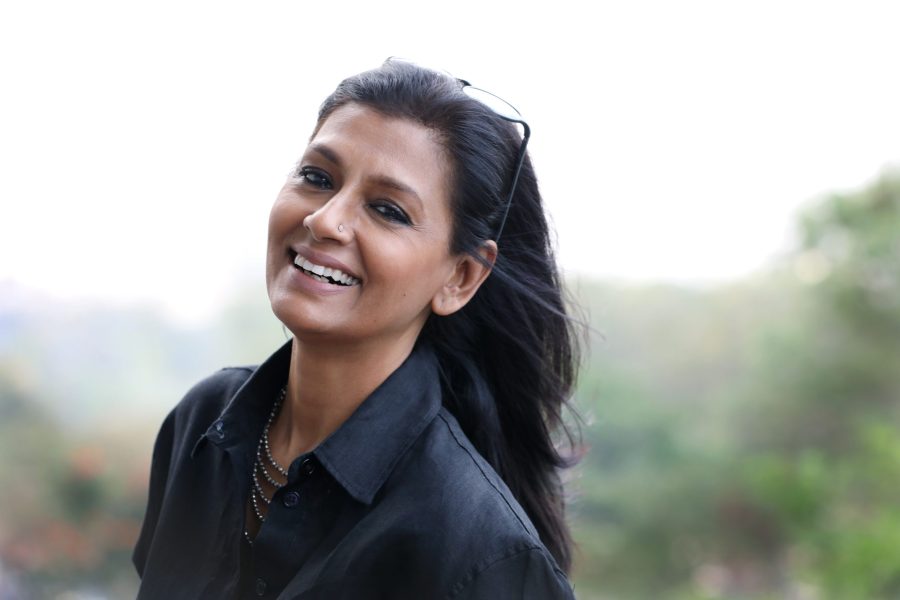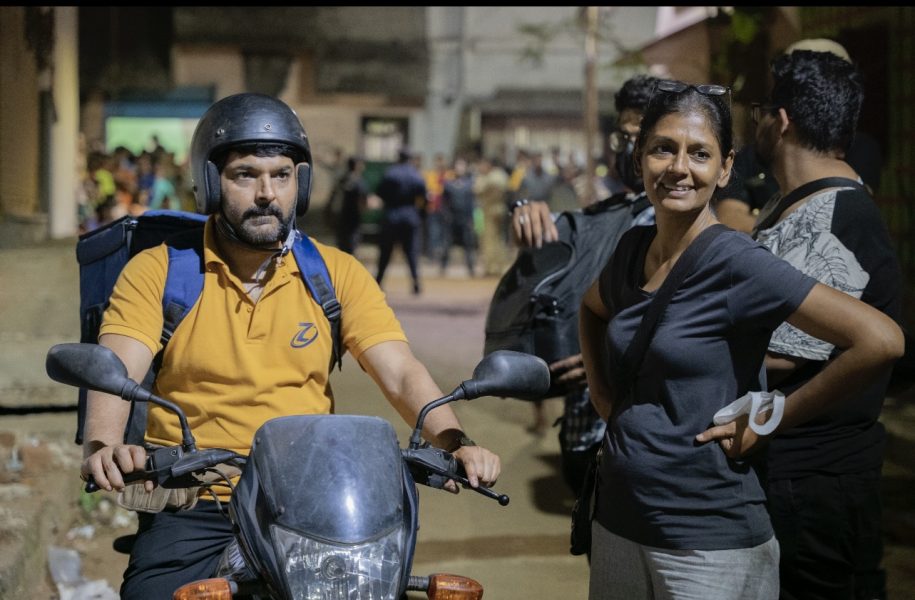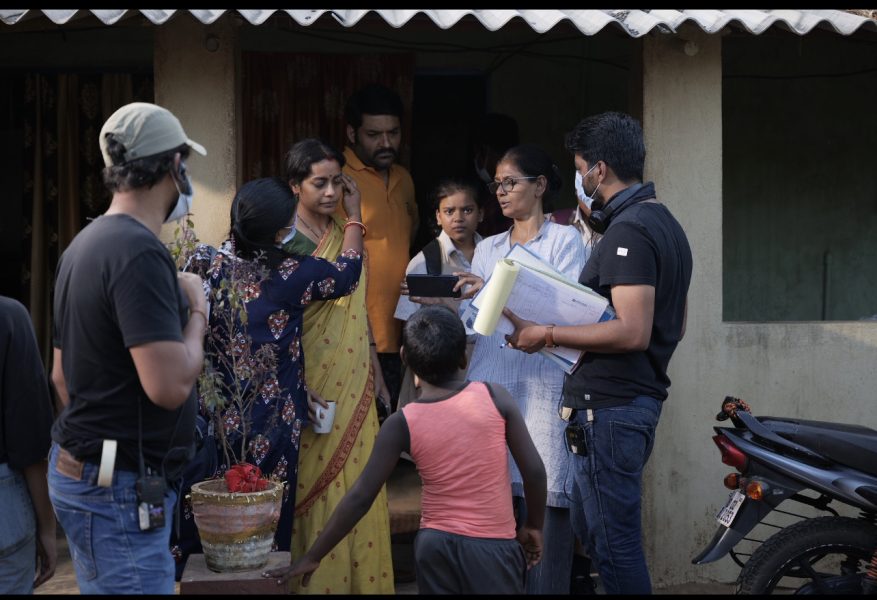
Nandita Das on Zwigato, romance, censorship, alternative cinema, and more

Zwigato, Nandita Das’ third directorial venture after Firaaq (2008) and Manto (2018), is a film about gig economy that casts a non-voyeuristic eye on people whose services are needed, but who are not often ‘visible’. At a time when most films stick to safe topics, Zwigato, starring Kapil Sharma and Shahana Goswami, touches upon issues that sadly still matter: religion, privilege, caste, and more.
Zwigato is not a gust, but a gentle breeze, and it forces you to think. In an in-depth e-mail interview, Nandita Das speaks to The Federal about the process of creating Zwigato, selecting the cast, keeping the focus on the marginalised and more. Edited excerpts:
How did you write the monotony in Zwigato’s world?
The monotony of constantly being on the bike is a leitmotif. The viewer witnesses the everyday grind that is seldom dramatic but is peppered with many small hurdles and the constant chipping away of dignity. This creates a disturbing monotony that I wanted the viewer to also experience.
The film speaks of a family that has recently fallen on bad times. We empathise with them, but also see their prejudices.
I have always portrayed my characters [including Manto] as real people, and real people are flawed. Manas and Pratima are shaped by their circumstances and upbringing that give rise to their own unconscious biases and prejudices. I believe that people understand this dichotomy and are able to appreciate the irony, even though they may not articulate it this way.
Also read: Zwigato review: A tender, insightful portrait of the disenfranchised in shining India
What about Kapil Sharma told you he can be contemplative, soft and vulnerable?
I hadn’t watched The Kapil Sharma Show at all! In a clip I saw of him hosting an awards’ function, he appeared natural and candid and that made me think of him as Manas. When I met him, it was clear he would be perfect. He fully committed himself to the process, and together we were able to create Manas, a character who takes life in his stride and does the best he can to make ends meet. It requires sincerity and authenticity, and this character’s world was not alien to Kapil as he has seen much struggle himself.

Shahana is poetry in motion, and you see what Pratima once was, what she’s been reduced to, but her dignity and ability to smile are intact.
Shahana was exactly how I had envisioned Pratima — someone who is part of the patriarchal system and yet questions it. She’s a hopeful character and a supportive wife but also has a mind of her own. We’ve all seen such women in real life, but they are seldom depicted in our films, especially in mainstream cinema now. Typically, women are either portrayed as silently suffering wives or as rebellious, aggressive, and defiant ones. In the real world, things are more complex.
The little moments of romance in a crowded home, those stolen furtive looks… How do you write and direct romance?
Most of what I write or create is a blend of instinct and the various experiences I have had the opportunity to immerse myself in. When you are an observer of life, you subconsciously store all the little nuggets you see, read, and are privy to. My experience in social work, and travelling across the country as an actor have given me a wide range of exposure. They find their way into the scripts I write and direct.
How did you write the working class home in Zwigato? This is not your lived experience, but the detailing is beautiful…
Even as an actor, you perform roles that are not ‘lived’ experiences. And, while directing, you stay with your characters and that world for much longer, and they too have seldom been lived experiences. But that is the power of empathy. Once you are privy to different realities, you subconsciously store things that impact you deeply. And then they emerge during writing. Sometimes, it’s difficult to even trace where a particular line, action or scene came from. Fiction can sometimes be even more real than capturing reality, because you can add elements from your other experiences and observations and make them more holistic.
The film is a political and social commentary (unemployment, religion, etc.) at so many levels, but it is subtle. What gave you faith the audience will get it?
I make a film only when I itch to say something. But when I am in the process of making it, I’m not thinking of the audience. How do I know anyone else’s sensibility or how they are going to respond? That said, every nuance in Zwigato has been caught by someone or the other.
Also read: Rocket Boys Season 2 review: A montage of hope and courage, the personal and political
We live in a time where creativity is stifled, censored. How do you react to it as an artiste and director?
Any form of censorship is like a double-edged sword — if we ever use it for things that offend us, we should also be aware that one day it will be used for things close to our hearts. Freedom of expression fuels good as well as bad ideas, and there have been instances where free speech has turned into hate speech. Nonetheless, we cannot deprive ourselves of taking that leap of faith that one day only the good will survive the test of time. I am a bit Voltairian in how I feel about censorship [“I do not agree with what you have to say, but I’ll defend to the death your right to say it.”] I prefer speaking through my work, instead of focussing on what others should or should not be doing. While art cannot create revolution, it has a way of influencing our subconscious, and impacting our lives and responses, and, therefore, it is a powerful tool.
How did you settle on Bhubaneswar as a place where Manas and his family live?
India is not just Delhi, Mumbai, UP, and Punjab, where many films are set. My father is from Orissa, but I have always been mistaken to be a Bengali. People know so little about this state that I felt this was a good opportunity to set the film there. I was anyway thinking of setting my story in a Tier-2 city, so why not Bhubaneswar? The people here are gentle and cooperative. The city is an important character in the film, as the food delivery rider crisscrosses the length and breadth of it, and since most have not seen Bhubaneswar, it is visually refreshing.

How has the response to Zwigato been?
The outpour of personal messages and social media feedback has not stopped. But, it’s not just been about ‘liking’ the film. It has made people reflect and pricked their conscience to do something about what we tend to ignore. People have shared their insights, and that has been most heartening. I’ve received a 12-year-old’s poignant questions; an 80-year-old who felt it is never too late to change… So many said that they had begun tipping and rating far more generously. It’s clear that the film has triggered something deeper.
Some people have also found it “too real”, “too heavy” or “not dramatic enough”. But, it has largely moved people in a subliminal way! Slowly, it is going beyond the excitement of Kapil’s new avatar, our intriguing combination, Shahana’s brilliant performance and Applause’s first film release. While these are causes for celebration, I very much like this gentle stir.
Why did you think of turning the spotlight on the people on the margins?
I have always been interested in putting the ‘spotlight’ on the unheard, marginalised, and underrepresented. It’s their stories that need to come out. They are increasingly vanishing from our collective consciousness and we see few protagonists from the working class. This was not the case a few decades ago, even in mainstream cinema.
Also read: ‘Everything Everywhere All At Once’ review: A migrant story with a human soul
The train is an important part of Manas’ life. You begin with an employed Manas, dreaming of himself inside a train, sweaty and desperate to go somewhere career-wise. When he’s out of a job, he’s riding parallel to it, the wind on his face…
For me, the train was a metaphor for the relentlessness of life. And that has become true for many people, especially the less privileged, as life is an unending grind. More so after Covid, where people have lost their job or are doing more menial work than they were meant to. The train is also a metaphor for chasing a dream, something that is unattainable.
You chose differently as an actor, and now as a director too. Was it an organic choice to be associated with a certain kind of cinema?
Mainstream cinema was not something I grew up watching, as my parents didn’t watch. I was introduced to films much later, and directly to world cinema and independent films in various languages. Instinctively, I got drawn to scripts that reflect reality and resonate with my own concerns. This may further stereotype me as someone who does a ‘certain kind of film’, but that’s what I organically gravitate towards.
The ending of Zwigato is as ephemeral and transient as racing a train, and a few moments of unfettered joy. How did you decide this is how Manas makes up to Pratima?
I’m always in a dilemma as to how to end a film. When I look back, I realise all three films of mine are rooted in grim realities but have a hopeful end. I believe hope propels us to do something about the status quo. I would not like to end a film with pessimism or cynicism. I never want to lose sight of reality either. And, therefore, even in Zwigato, after you see the protagonists in full abandon, you are brought back to reality through the end credits with beautiful graphics that depict yet another gruelling day. For me, the end is often open-ended — the audience needs to take it forward.


